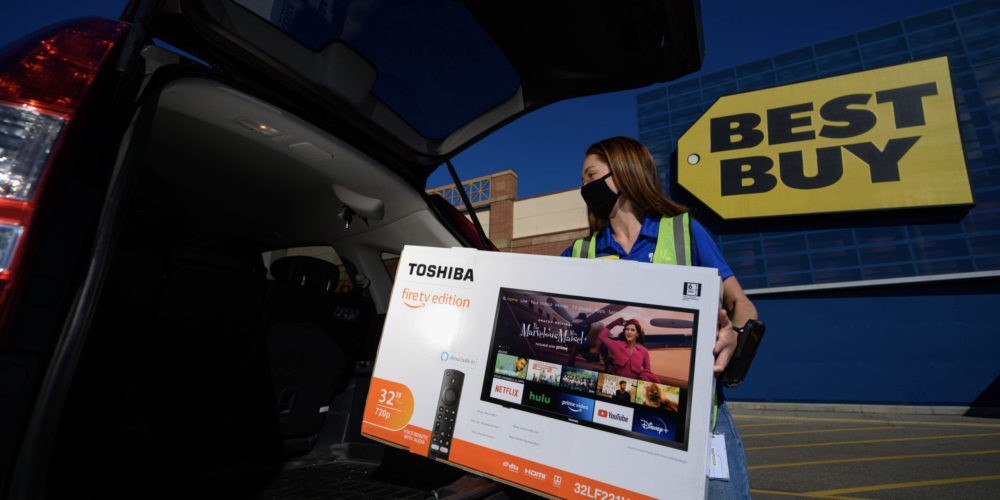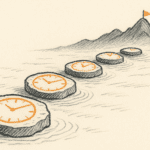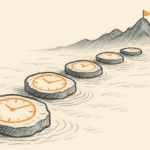How do you fight Amazon?

If the behemoth that is Amazon enters your industry, how on earth do you fight it?
Amazon has bottomless financial resources. It has remarkable strategic vision. It is the trailblazer in online shopping with decades of experience behind it. It cannot be beaten on price or convenience.
What the hell do you do?
Take a close look at Best Buy, the big-box US store selling computers, electrical appliances and mobile phones. By 2012, Amazon had already waylaid and mugged Circuit City and Radio Shack, Best Buy’s traditional competitors. Best Buy was also facing falling sales, store closures and a collapsing share price. Many customers would come to Best Buy to check out the products – and then order them from Amazon to get the lower online price – sometimes right there in front of the Best Buy assistant!
Who would want to be CEO of that business? Hubert Joly did. He arrived with a different idea. He understood that he would never beat Amazon by just selling boxes. If a TV is just a TV, and a computer just a computer, then Amazon wins hands down. Why pay more? Instead, Joly had this great strategic insight: you can’t beat a dominant competitor on their own terms. You have to look for something else.
What is Amazon brilliant at? Speed, convenience, price. If Best Buy had been suckered into trying to match them on those attributes, punch for punch, they would have been knocked out in round one. They had to find a different way to fight.
Joly’s big strategic initiative was to make his business MORE human, not less, in the face of the digital onslaught. First, however, he understood that his prices could not be too far above Amazon’s – and set his team to find cost savings that would allow them to achieve near-parity in price. Then he unleashed his real recasting: to make Best Buy a high-touch face-to-face business that provided deeply human experiences to customers: warm smiles, deep product knowledge, useful advice, great after-sales follow-ups.
In other words, don’t try to beat Amazon on sleek websites and robot-driven warehousing and hyper-optimized supply chains – beat them on good old-fashioned human interaction.
What did that entail? Better trained assistants in the stores; and in-home advisors who would visit customers and give their best tips on what would work for them. Best Buy shifted the terms of engagement away from efficiency and price, towards service and relationship.
This is recounted in Kevin Roose’s excellent book, Futureproof. CEO Joly told the author that he moved the business from just selling boxes to connecting technology to human needs. The emphasis being on understanding and managing the human needs.
Did it work? Heck, yeah. After a period of transition, sales first stopped falling and then began edging up. Customers appreciated the extra value-adds, and began relying on Best Buy’s advice and counsel. The stock price also improved dramatically, allowing Hubert Joly to step down in 2019 to a hero’s farewell.
Oh, and guess what? Amazon’s founder, Jeff Bezos, appreciated this approach. In 2018, Bezos and Joly announced an expanded partnership for Best Buy to showcase those Amazon products that benefit from face-to-face service: the Kindle, the Echo and FireTV. There is mutual regard and respect there.
There are two strategy lessons to note in this story. First is the great insight, that I first saw articulated by Jules Goddard and Tony Eccles: you don’t beat an incumbent by being like the incumbent. Amazon, and other dominant firms, would love it if you try to be like them or take them on at their own game. They know you won’t win that one, because they are masters of that game – that’s why they dominate it! When Amazon came onto the scene a couple of decades ago, they did not try to play Walmart or Best Buy’s game; they changed the terms of engagement.
So, to beat Amazon, a wise competitor does the same. Focus on what the dominant one DOESN’T do well. I wrote about this here in 2011: “There is nothing to gained by being a faded photocopy of someone else; there is everything to play for in being the most vivid, most emphatic, most renowned practitioner of something unique. Let your competitors benchmark your strengths; you play on their glaring weaknesses.”
That’s a great lesson in strategy, for new entrants or struggling giants in equal measure. To fight the leader, don’t play the leader’s game; start a new game, based on what the leader is demonstrably bad at doing—as long as there are customers who wish for what’s missing.
I’ll leave you to figure that out for your industry.
(Sunday Nation, 15 August 2021)

Buy Sunny Bindra's new book
The X in CX
here »
Popular Posts
- Where are you rushing to—your funeral?June 29, 2025
- How to spot a real thinkerJune 15, 2025
- The map will appear—once you start walking.July 6, 2025
- Built the app, forgot the flowJune 22, 2025
- The pause that saves usJune 8, 2025















